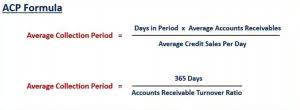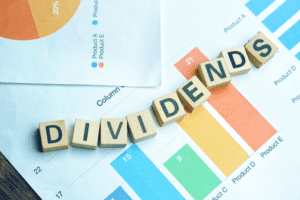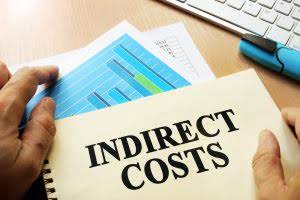
In this example, the current portion of long-term debt would be listed together with short-term liabilities. This ensures a more accurate view of the company’s current liquidity and its ability to pay current liabilities as they come due. Other long-term obligations refer to financial commitments or liabilities a company expects to settle beyond a year. They might include deferred revenue, long-term advances, or obligations related to the environment, warranties, or legal settlements.
- If it takes 3 months to sell the goods on credit and then another month to collect the receivables, the distributor’s operating cycle is 4 months.
- Other long-term obligations refer to financial commitments or liabilities a company expects to settle beyond a year.
- The account Retained Earnings provides the connection between the balance sheet and the income statement.
- This distinction is important for assessing a company’s immediate liquidity.
- The amortization schedule shows the decreasing amount of interest as each payment is made, and the decrease in the principal balance.
Pros and Cons of Convertible Bonds
Shaun Conrad is a Certified Public Accountant and CPA exam expert with a passion for teaching. After almost a decade of experience in public accounting, he created MyAccountingCourse.com to help people learn accounting & finance, pass the CPA exam, and start their career. HighRadius is redefining treasury with AI-driven tools like LiveCube for predictive forecasting and no-code scenario building. Its Cash Management module automates bank integration, global visibility, cash positioning, target balances, and reconciliation—streamlining end-to-end treasury operations. It allows users to extract and ingest data automatically, and use formulas on the data to process and transform it. Charlene Rhinehart is a CPA , CFE, chair of an Illinois CPA Society committee, and has a degree in accounting and finance from DePaul University.
- Using debt (such as loans and bonds) to acquire more assets than would be possible by using only owners’ funds.
- Properly managing a company’s liabilities is vital for maintaining solvency and avoiding financial crises.
- Goodwill is a long-term (or noncurrent) asset categorized as an intangible asset.
- Some examples of how the Income Statement and the Cash Flow Statement can affect long term obligations are listed below.
- For example, if the company has to pay $20,000 in payments for the year, the long-term debt amount decreases, and the CPLTD amount increases on the balance sheet for that amount.
How to Make a Balance Sheet for Small Business
In financial management, liabilities are obligations, usually money, that businesses owe to third parties, like vendors, lenders, and even employees. You can think of them as payouts the company knows it will need to make but hasn’t yet. The amount of short-term debt— compared to long-term debt—is important when analyzing a company’s financial https://jupiter.csit.rmit.edu.au/~s4005589/wordpress/index.php/2021/04/16/bookkeeping-services-in-dallas/ health. If it is expected to be settled in the short-term (normally within 1 year), then it is a current liability. Businesses try to finance current assets with current debt and non-current assets with non-current debt.

Order to Cash
However, the current portion of this loan, which represents the amount payable in the upcoming year, will be presented under current liabilities. Unearned RevenuesUnearned revenues represent advance payments received for goods or services that have not yet been delivered or fully earned. Once the product long-term liabilities include or service is supplied, the unearned revenue liability decreases as the asset is recognized on the balance sheet. The most common example of unearned revenues is membership subscriptions and magazine subscriptions where payment is collected upfront but the service is provided over an extended period.

Examples of Pension and Post-retirement Obligations
In accounting terms, leases can be classified as either operating leases or finance leases. An operating lease is recorded as a rental expense, while a finance lease is treated as a long-term liability and an asset on the balance sheet. Accrued Expenses are expenses that a company has incurred but not yet paid. These expenses are recorded in the income statement and the corresponding liability is reported in the balance sheet. Examples of accrued expenses include wages payable, interest payable, and rent trial balance expenses. Enerpize online accounting software makes managing and calculating liabilities effortless by automating your accounting processes and keeping your financial data organized in one place.
Types of Non-Current Liabilities
The current liability deferred revenues reports the amount of money a company received from a customer for future services or future shipments of goods. Until the company delivers the services or goods, the company has an obligation to deliver them or to refund the customer’s money. When they are delivered, the company will reduce this liability and increase its revenues. A short-term loan payable is an obligation usually in the form of a formal written promise to pay the principal amount within one year of the balance sheet date.

Are notes payable long-term liabilities?

Financial liabilities are obligations or debts owed by an entity to external parties, often involving the repayment of funds or providing goods or services in the future. They include loans, bonds, accounts payable, and other contractual obligations that result in a future cash outflow. While both items can impact a company’s balance sheet, they differ greatly in terms of disclosure requirements, regulatory scrutiny, and potential risks. Other current liabilities influence various financial ratios that investors and analysts use to evaluate a company’s liquidity and solvency. Some common ratios include the current ratio, quick ratio, and debt-to-equity ratio. Analyzing these ratios can help determine a company’s ability to meet its short-term obligations using its available resources.
Investment Implications for Institutional Investors
It invoices the restaurant for the purchase to streamline the drop-off and make paying easier for the restaurant. In accounting, financial liabilities are linked to past transactions or events that will provide future economic benefits. Yes, debentures are a common type of long-term liability representing a company’s debt obligations. With a current ratio above 2, the company can comfortably meet its short-term obligations, demonstrating strong liquidity.
